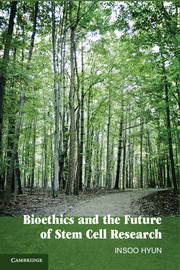5 - Pegasus and the Chimera
Stem Cell–Based Animal Research
Published online by Cambridge University Press: 05 May 2013
Summary
Chimera research is a common type of animal research used to advance stem cell science and many other areas of biomedicine. Biologically, chimeras are organisms that are composed of genetically distinct cells originating from two or more zygotes, or the imperfect equivalents thereof, such as parthenotes and SCNT embryolike constructs (Behringer 2007; Hyun et al. 2007). Unlike hybrids, which are produced by uniting the sex cells of two different species of plants or animals (wherein each cell contains the resulting new mixture of DNA – as is the case with grapefruit and mules), chimeric organisms are comprised of coexisting populations of cells with genes from different animal sources.
The term chimera comes from classical mythology. The Chimera, as described in Homer’s Iliad, was a fire-breathing monster composed of the head of a lion, the body of a goat, and the tail of a serpent. The Chimera was, in essence, a patchwork of different animals. Given its patchwork nature, the Chimera lacked species integrity; and its physical capabilities were new and unpredictable.
Like the mythical Chimera, biological chimeras can be comprised of different species. They can also be comprised of members of the same species. For example, human pregnancies produce a mild form of chimerism that persists in mothers for decades after the fetus’ progenitor blood cells have passed through the placenta (Bianchi et al. 1996). Human-to-human chimeras also occur naturally when two complete human zygotes fuse together during a very early developmental stage, prior to implantation in the womb. On rare occasions where the chimeric embryo proceeds to gestation, the resulting fetus is composed of cells from the two original embryos. More commonly, however, human-to-human chimeras result from clinical treatments for disease – the most obvious examples being the recipients of whole organ transplantation.
- Type
- Chapter
- Information
- Bioethics and the Future of Stem Cell Research , pp. 108 - 129Publisher: Cambridge University PressPrint publication year: 2013



